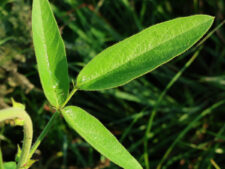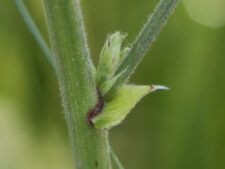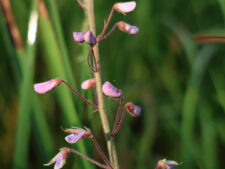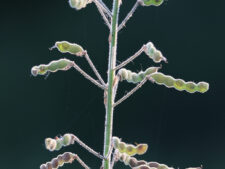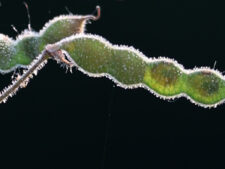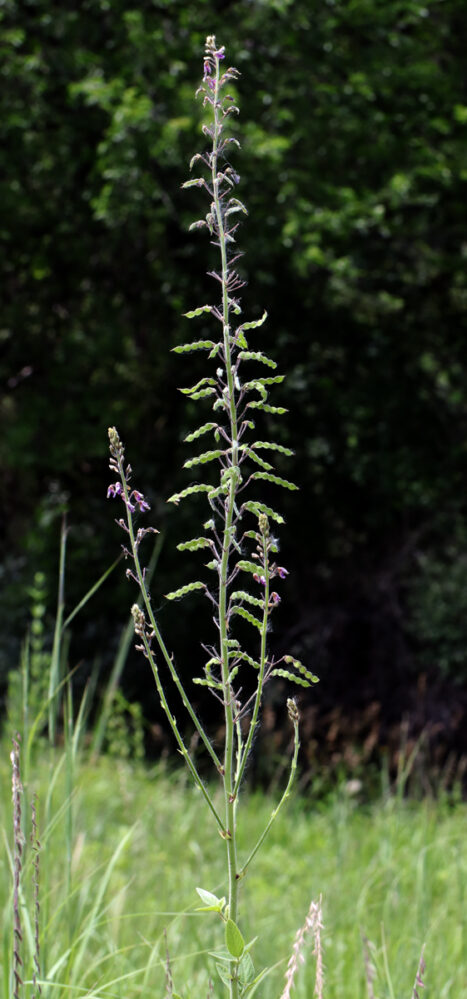
Illinois Tick Clover has a stout central flowering stem covered with fine hooked hairs. Side branches are fewer and less prominent than those of our other Desmodiums (A) . Alternate leaves are divided into 3 leaflets, the leaf stalk significantly longer than those of its leaflets (B). At the base of each leaf are 2 green, triangular bracts (stipules) with pointed tips which often remain even after the leaves have fallen (B,C). Small, pink to purple pea-shaped flowers on short, hairy stalks occur intermittently along the flowering stem (D). A curved tube containing the fused stamens and pistil projects from its center and there are small pale spots at the base of the erect upper lip. Elongated flat pods (loments) have 3-9 segments that are rounded on both their upper and lower margins, each segment containing a single seed (E,F). They are covered with fine hooked hairs which cling to anything (one) passing their way.
Out Tick Clover species look very much alike, but there are a few clues that usually allow separation of Illinois from Canada Tick Clover (D. canadense). Illinois usually has a dominant single flowering stem with less showy, more widely spaced flowers, longer leaf stalks with a pair of persistent, broad, green stipules at their base and seed pods that are convex on both upper and lower margins.
Illinois Tick Clover is a native prairie plant, much less likely than our other Desmodiums to be found anywhere other than a prairie or prairie restoration. Flowering occurs from June to September.
Illinois Tick Clover is host to larvae of many insects including Eastern Tailed Blue and Gray Hairstreak butterflies as well as Cloudywings and some other skipper species.

 Identification
Identification